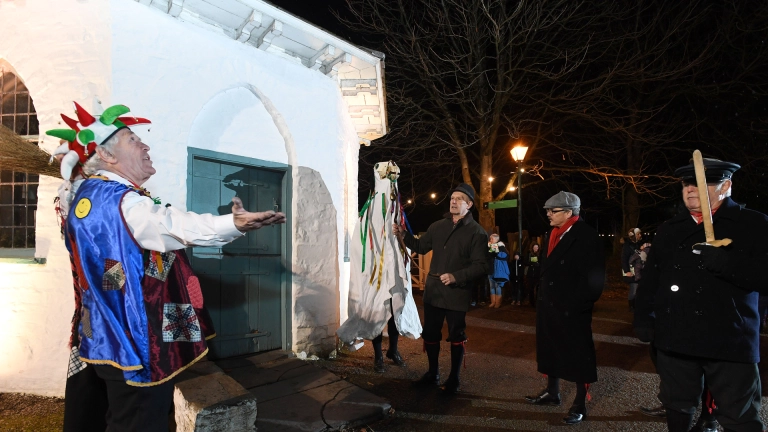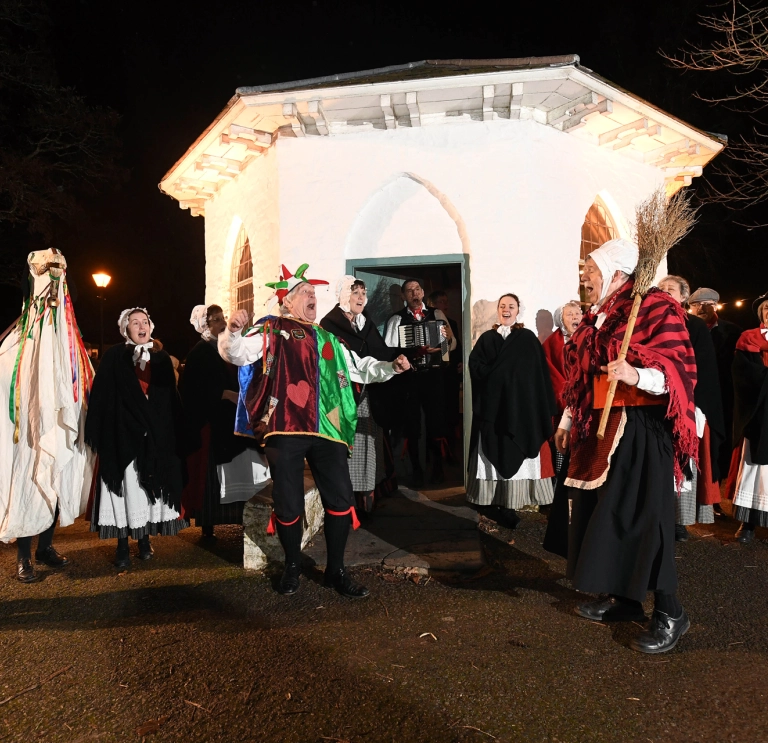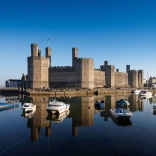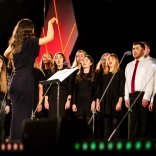You'll never forget the moment you first see a Mari Lwyd. She has lights or baubles for eyes. Her mane is made of colourful streamers, or holly and ivy. A white cloak falls from her skull, which is attached to a pole, which is held by a person inside it: they control the character's mischievous nature, often snapping their bony jaw at you.
What does Mari Lwyd mean?
The origins of Mari’s name are, like the horse herself, are deeply mysterious. One Welsh translation of it, Grey Mare, connects it to the heritage of pale horses in Celtic and British mythology, many of whom can cross over to the underworld (Rhiannon in the Mabinogion rode a white horse, for example).
The other translation for Mari Lwyd is Grey Mary. Some scholars have linked her to a legend connected to the the nativity story. A pregnant horse sent out of the stables when Mary arrived to have Jesus, she spent dark days roaming the land trying to find somewhere new to have a foal. Many Mari fans believe the character to have come from pre-Christian, pagan origins, however. This is impossible to prove, but there's definitely something timelessly terrifying about her.
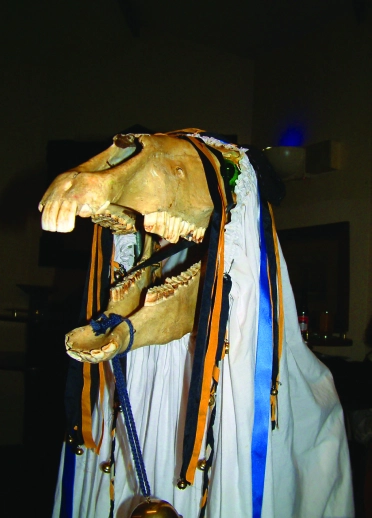
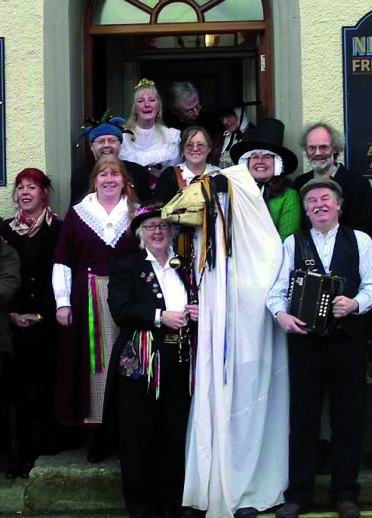
What does Mari Lwyd do?
Mari is taken around a village traditionally, often between Christmas Day and Twelfth Night, She is dressed with festive lights and decorations, and is usually accompanied by an ostler, and in some regions like Ystradgynlais in the Swansea Valleys, other folk characters like a jester and a Lady. This brings the tradition closer together with Mummers' Plays, a tradition of performances by the working classes in the 18th century.
When the groups get to a house, they sing Welsh language songs or wassails, or more traditionally indulge in a ritual called pwnco: an exchange of rude rhymes with the person who lives there. If the Mari and her gang get entry, the household is said to have good luck for the year. The Mari is well-known to be mischievous – trying to steal things and chase people she likes – as she goes about her bidding.
Where did the tradition begin?
The first written record of the Mari Lwyd is in J. Evans' book from 1800, A Tour through Part of North Wales, although the tradition is best known for its practice in Glamorgan and Gwent. It has similarities to other hooded animal customs in Britain, like the Hoodening in Kent, the Broad in the Cotswolds and The Old Tup in Derbyshire, which involved a group of poor people trying to find food and money in the harsh depths of the winter. Entertainment was their method, with a side portion of menace: that dead horse's skull appearing in shadow at your door.
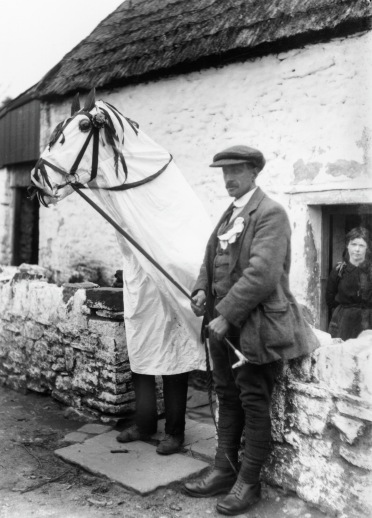
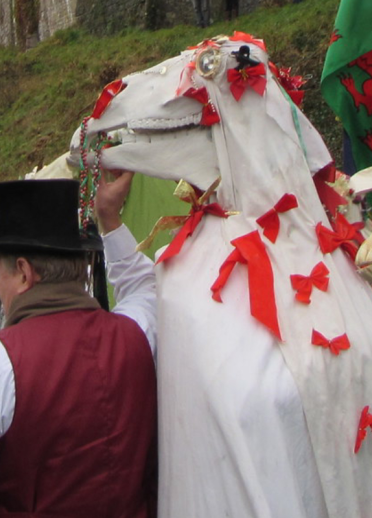
Vernon Watkins, The Ballad of The Mari LwydThe Living are defended by the rich warmth of the flames which keeps that loneliness out," his poem goes. "Terrified, they hear the Dead tapping at the panes; then they rise up, armed with the warmth of firelight."
How did the tradition start to change?
Welsh Methodists and other Christian non-conformists criticised the Mari Lwyd in the 19th century. The Blaenau Gwent-based Baptist minister, Reverend William Roberts, called her "sinful" in his 1852 book, The Religion Of The Dark Ages, although he also transcribed twenty verses of the Mari's performance, helping to disseminate the tradition. In the 1930s and 1940s, Welsh folklorist Iorwerth Peate found the practice still alive in Cardiff, Bridgend, Llangynwyd, Neath and other parts of Glamorgan, despite fears that it was starting to die.
Welsh poet Vernon Watkins even wrote a long poem about her in 1941: The Ballad of The Mari Lwyd, after hearing a radio broadcast about the ritual in Gwaelod-y-Garth, a village just north of Cardiff. His words beautifully capture the Mari Lwyd's frightening aspect. "The Living are defended by the rich warmth of the flames which keeps that loneliness out," his poem goes. "Terrified, they hear the Dead tapping at the panes; then they rise up, armed with the warmth of firelight."
Only a few Mari processions were left by the 1960s, including in Pencoed near Bridgend and Pentyrch near Cardiff. But later that century, Llantrisant Folk Club revived the tradition, as did a family in Llangwynyd near Maesteg, who still visit the Old House Inn in the village with their Mari today: three generations of landlords have now hosted them.
Other popular celebrations also happen in the New Year at Chepstow (after a break in 2020), Gellionnen Chapel on a mountainside near Pontardawe, Llansoy in rural Monmouthshire, Dinas Mawddwy and at The London Welsh Centre. Maris are also popping up at local midwinter events, lantern festivals and wassails, their baubles glowing in their eyes, the tradition shining with new life.
So don't have nightmares. Let yourself be taken in by the darkness, and go with Mari Lwyd towards the light.
